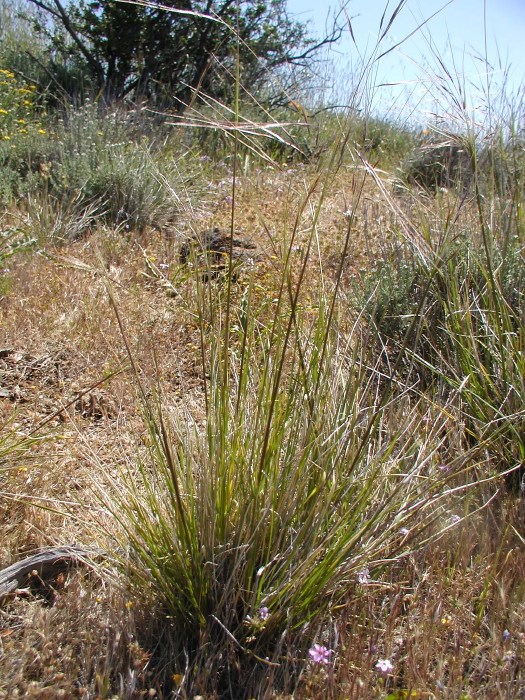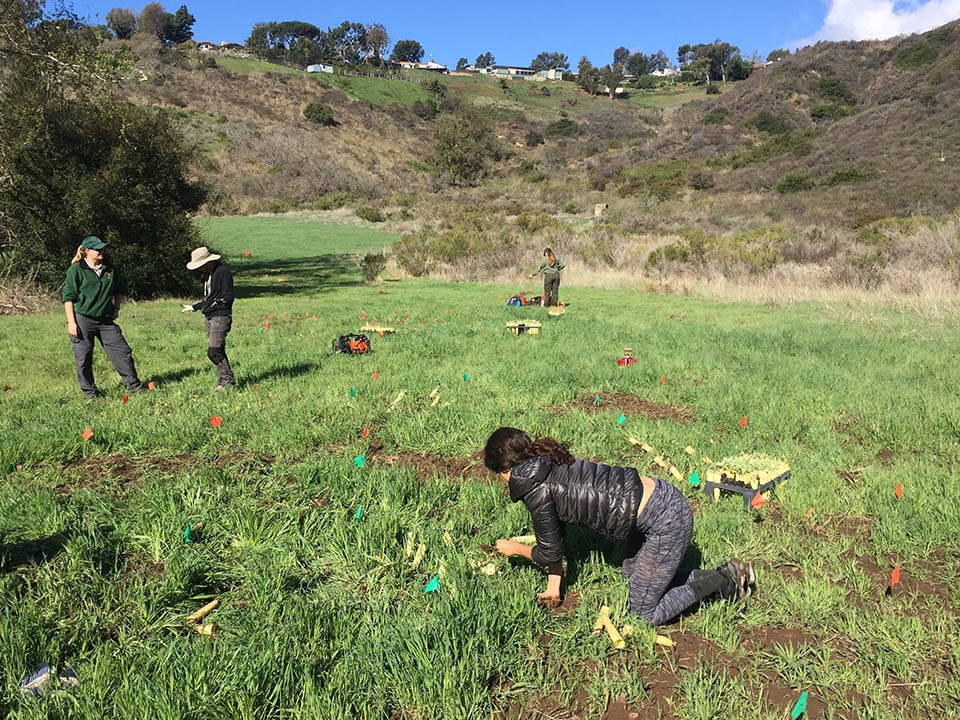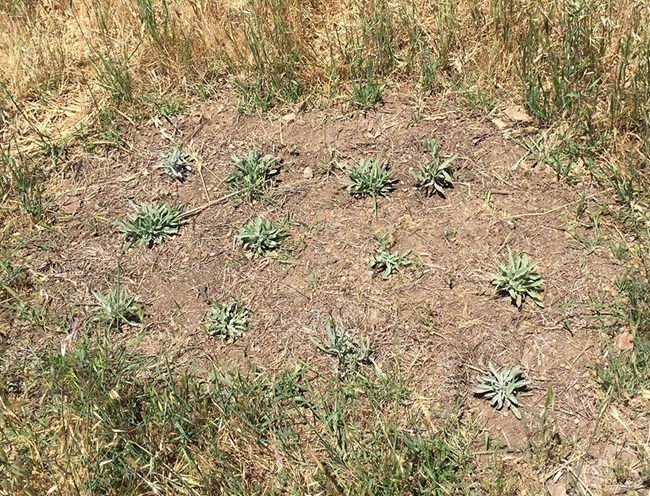Last updated: August 15, 2018
Article
Can Higher Densities Help Native Plants Gain a Disturbed Area Advantage?
May 2018 - Have you ever been hiking in Santa Monica Mountains National Recreation Area, and wondered why some areas look like they have been mowed? If so, you probably encountered some of the park’s fuels reduction areas, which it does in fact mow each year before the fire season. In the event of a wildland fire, these areas will starve it of fuel and stem its spread in order to protect lives, properties, and park ecosystems.

© Brent Miller / 2003 / CalPhotos / CC BY-NC-SA 3.0
Though effective, fuels reduction areas also have a few downsides. Namely, since they are regularly disturbed by mowing, they have become a haven for fast-growing invasive plants like annual grasses, thistles, and mustards. The invasive species crowd out native plants and reduce valuable habitat for wildlife. They are also unsightly, and may even necessitate more frequent mowing. What is a park to do?
While there are no easy answers to the relatively new question of how to get more native plants to thrive in fuels reduction areas, park scientists have some theories. Several years ago, in his former role as a field monitor, park restoration ecologist Joey Algiers started noticing dense clumps of native plants in fuels reduction areas that were otherwise oceans of invasive species. That got him wondering if higher densities of native plants might be part of the answer. Now, park biological technician Alexandra Cherroff Getches is leading a study to put that theory to the test.
The study involves planting three different native species, at three densities, in a whole bunch of plots at three different locations. Ecologists chose three native species that were among those Joey had observed surviving in patches: purple needlegrass (Stipa pulchra), wooly aster (Corethrogyne filaginifolia), and slender tarweed (Deinandra fasciculata). They chose the three locations, in Rancho Sierra Vista, Zuma Canyon, and Cheeseboro Canyon, because each is a different distance from the coast, with different microclimates, and different mowing times. For example, the most inland location, Cheeseboro Canyon, is warmer and drier, with a higher risk of fire, so it gets mowed earlier in the season.

NPS / Alexandra Cherroff Getches
This spring, community volunteers joined forces with park staff and interns to plant 777 purple needlegrass and 567 wooly aster seedlings, and 50,000 slender tarweed seeds in randomly assigned plots at each site. They are now following up with weeding, trying to make sure all of the seedlings have the best possible shot at getting established. Soon, regular mowing will begin, at which point the native plants will be on their own for the rest of the year.

NPS / Alexandra Cherroff Getches
Next spring, Alexandra will lead revisits to each site, where staff and interns will measure how much of each plot is covered by native, versus invasive, species. This will allow her to identify which species-density combinations, if any, are the most likely to succeed at keeping invasive species in check at different locations. Follow-up evaluations may continue in subsequent years as well, to see how the native plants fare in the longer term.
Whatever the results, this study will help Alexandra, Joey, and park managers figure out what the next step should be towards improving fuels reduction areas. What planting strategy to test on a wider scale, or what study to tackle next? We’ll have to wait and see!
Prepared by the Mediterranean Coast Inventory and Monitoring Network.
